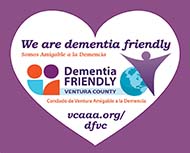
Falling at home can be an incredibly frightening experience, especially for those who are elderly or living alone. According to the CDC, more than 33% of people aged 65 and older are involved in accidents and falls in the home each year. Oftentimes these falls are due to hazards that are easily overlooked but simple to fix.
Below you will find common hazards that are found throughout the home and solutions to fix them. Making you and your loved ones homes safe now, can prevent a fall later.

Throw and area rugs that are not properly secured
Exposed cords from lamps, telephones or other appliances running across the floor
Poor lighting throughout the house

Remove the rugs altogether or add a non-slip backing so the rugs don’t move or slide.
Coil or tape cords along the wall or hire an electrician to install additional electrical outlets.
Add automatic night lights throughout the house that will turn on automatically in the dark.

Stairs with broken, uneven steps or with carpet that is loose or frayed
Poorly lit stairs or only one light switch at either the top or bottom of staircase
Broken or missing handrails

Fix broken or loose steps and replace or tighten sagging carpet. Another option is to remove carpet completely and attach non-slip rubber pads directly to stairs.
Hire an electrician to install additional lighting at the top and bottom of staircase along with a switch in each location.
Fix or replace broken handrails. Add a second rail if necessary to ensure handrails are located on both sides for the entire length of the staircase.

Slippery surfaces in tub or shower
Lack of support or handholds while using the toilet, shower or bath
Cluttered floor with towels or slippery rugs

Add non-slip rubber mats or sticky strips on the floor of the tub or shower.
Have handholds or grab bars installed inside the shower/tub and next to toilet.
Keep floors free of towels/rugs and potential trip hazards.

Storing frequently used items in inconvenient locations
Using an unsteady stool or chair to stand on when reaching for items
Cluttered and overstuffed cabinets

Keep frequently used items within easy reach (preferably waist to chest level) to avoid needing to reach, kneel or use a step stool.
Make sure to use a step stool with rubber grips on the feet and a hold bar. Never use a chair as a step stool.
Organize and minimize the amount of items in your cupboards and cabinets. Box up and either store or give away excess items that are not necessary.

Poor lighting or inability to reach a light while entering/exiting bed
Cluttered or over-stuffed closets

Add a lamp with a cord switch to the bedside table or have an electrician install a light switch on the wall next to the bed.
To reduce trip hazards, keep closets clutter free and clothes off the ground. Organize and purge items that don’t fit or are no longer worn.

Poor lighting outside leading to/from the door
Cluttered or uneven path leading to/from the door
Multiple steps leading to/from the door

Install motion lights that will automatically turn on when you approach the door or step outside.
Keep path free of debris, plants and weeds. Fix cracks or uneven areas that could catch your foot.
Add a no-step ramp with secure railing along the entire length of the ramp. If adding a ramp is not possible, at minimum make sure there is at least secure railing along the length of steps.
If you have taken a fall in your home, follow these guidelines to reduce your risk of additional injuries:
• Do not attempt to break the fall by extending your arms. Instead, raise an arm to protect your head.
• Try to fall on your side or buttocks.
• Don’t panic and remain still on the ground for a few moments until the shock of falling has worn off.
• Assess the situation to determine if you are hurt. Getting up too quickly or in the wrong way can make an injury worse.
• If you feel you can safely get up without help, roll over to your side and slowly get on your hands and knees.
• Slide or crawl to the nearest chair or couch and slowly raise yourself and turn your body into the sitting position.
• If you are badly injured, do not try to get up. Instead, call out for help.
• If you are alone, slowly crawl to the telephone and dial 911.
If you believe your loved one needs assistance in their home, Assisted Healthcare Services can help. We offer Caregiver Services that can help keep your loved ones safe and free from potentially dangerous situations. For more information, please contact the award winning team at Assisted Healthcare Services, at (800) 949-6555 or www.AssistedCares.com.







